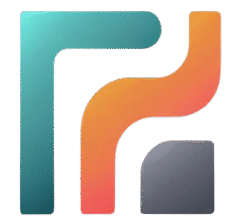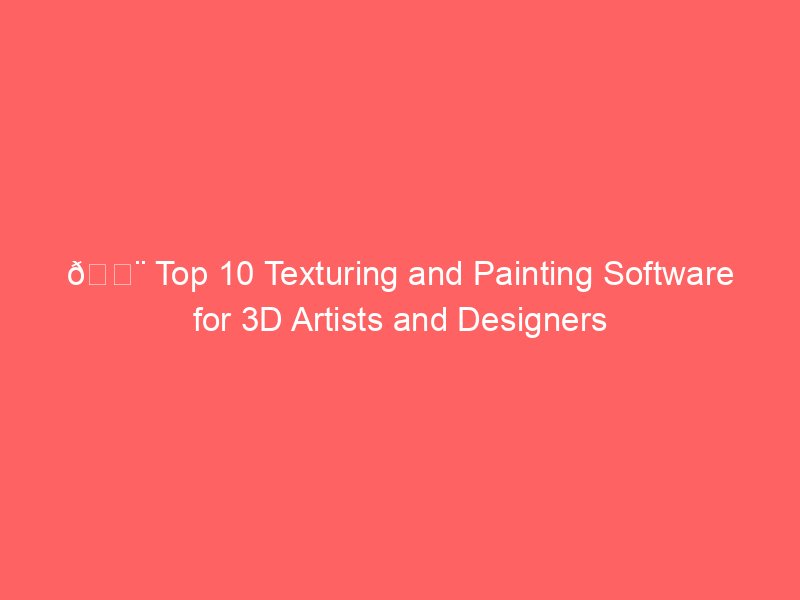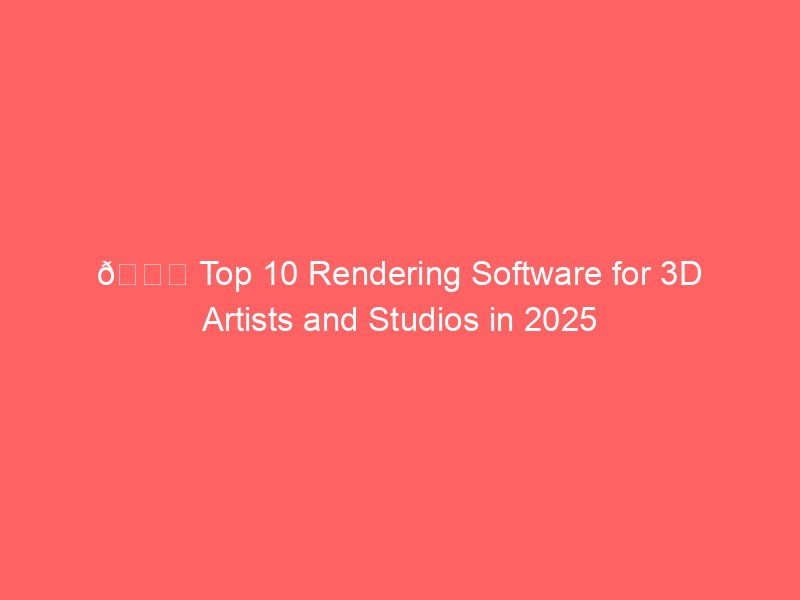In the world of 3D design, creating a stunning model is only half the job. To truly bring it to life, artists need to apply realistic textures, intricate details, and surface finishes that make objects look believable. This is where texturing and painting software comes in. Whether it’s for gaming, films, animations, or product design, these tools help designers craft lifelike or stylized surfaces with incredible precision.
Below, we explore the 10 best texturing and painting software tools, their features, strengths, and best use cases.
1. Substance Painter (Adobe)
Perhaps the most popular tool in the industry, Substance Painter is known for its power and versatility. It offers a non-destructive workflow, smart materials, and procedural effects that make texturing seamless.
- Best for: Professionals in game development, film, and VFX.
- Key Features:
- Real-time PBR (Physically Based Rendering) workflow.
- Smart masks and materials.
- Support for particle brushes and procedural painting.
- Direct export to engines like Unreal Engine and Unity.
- Real-time PBR (Physically Based Rendering) workflow.
- Pros: Industry standard, intuitive UI, incredible realism.
- Cons: Expensive for beginners, requires a strong system.
2. Mari (Foundry)
Mari is another heavyweight tool used by top studios like Industrial Light & Magic and Weta Digital. It’s designed for handling extremely high-resolution textures with ease.
- Best for: VFX artists and high-end film production.
- Key Features:
- Handles 32K textures.
- Advanced layering system similar to Photoshop.
- Procedural workflows with nodes.
- Seamless UDIM support.
- Handles 32K textures.
- Pros: Can handle very large assets, production-proven.
- Cons: Steeper learning curve, expensive license.
3. 3D-Coat
3D-Coat is a versatile program for sculpting, retopology, UV mapping, and painting. Its painting module is especially powerful, providing hand-painting tools and procedural textures.
- Best for: Freelancers and indie developers needing an all-in-one solution.
- Key Features:
- Voxel sculpting and PBR painting.
- Smart material system.
- Advanced UV mapping tools.
- VR painting support.
- Voxel sculpting and PBR painting.
- Pros: Affordable compared to big names, wide toolset.
- Cons: Interface can feel cluttered, not as streamlined as Substance Painter.
4. Quixel Mixer
Quixel Mixer is completely free and integrates seamlessly with the Megascans library, giving artists access to a massive library of high-quality textures.
- Best for: Game developers and environment artists.
- Key Features:
- Mix and blend materials with ease.
- Megascans integration for instant high-quality assets.
- Layer-based workflow.
- Supports displacement and normal map creation.
- Mix and blend materials with ease.
- Pros: Free, large asset library.
- Cons: Limited compared to Substance or Mari, still evolving.
5. ArmorPaint
An open-source alternative to Substance Painter, ArmorPaint offers node-based, GPU-accelerated painting. It’s a budget-friendly option for indie developers and hobbyists.
- Best for: Indie developers and those looking for open-source flexibility.
- Key Features:
- PBR-based workflow.
- GPU-accelerated for fast performance.
- Supports node-based material editing.
- PBR-based workflow.
- Pros: Affordable, open-source, lightweight.
- Cons: Lacks advanced features found in Mari or Substance Painter.
6. ZBrush (Pixologic)
While ZBrush is primarily a sculpting software, it has powerful texturing tools like Polypainting, which allows artists to paint directly on high-poly models without UV maps.
- Best for: Character artists and sculptors.
- Key Features:
- Polypainting without UVs.
- Support for displacement and normal maps.
- Extensive brush system.
- Polypainting without UVs.
- Pros: Seamless with sculpting workflow.
- Cons: Limited compared to dedicated texturing software, can be overwhelming.
7. Mudbox (Autodesk)
Mudbox is Autodesk’s answer to ZBrush but also provides decent texturing tools with a focus on painting directly on 3D meshes.
- Best for: Artists in Autodesk ecosystems (Maya, 3ds Max).
- Key Features:
- High-resolution painting.
- Seamless integration with Maya.
- Layer-based painting similar to Photoshop.
- High-resolution painting.
- Pros: Easy learning curve, strong integration.
- Cons: Development updates are infrequent, less popular in industry now.
8. BodyPaint 3D (Maxon Cinema 4D)
BodyPaint 3D comes as part of Cinema 4D, giving artists the ability to paint textures directly onto models in real-time.
- Best for: Cinema 4D users needing integrated texturing.
- Key Features:
- Real-time projection painting.
- Seamless integration with C4D’s workflow.
- Multi-channel texture painting.
- Real-time projection painting.
- Pros: Great for motion graphics artists.
- Cons: Not as advanced as Substance or Mari, limited standalone appeal.
9. Blacksmith3D
A lesser-known tool, Blacksmith3D specializes in painting and morphing. It’s used by character designers, especially in the 3D printing and Poser/DAZ Studio communities.
- Best for: Character artists working with DAZ or Poser.
- Key Features:
- Direct painting on 3D models.
- Morphing and sculpting tools.
- Support for multiple texture maps.
- Direct painting on 3D models.
- Pros: Niche tool, easy to use.
- Cons: Not suitable for large-scale professional workflows.
10. Mari Indie
For freelancers and smaller studios, Mari Indie offers a more affordable way to access Mari’s powerful features, though with certain limitations.
- Best for: Freelancers who want Mari’s power at a lower cost.
- Key Features:
- Many of Mari’s high-end painting tools.
- Layer and node-based workflows.
- Good UDIM support.
- Many of Mari’s high-end painting tools.
- Pros: Affordable entry point into Mari.
- Cons: Restricted resolution and export limits compared to full Mari.
🔑 Final Thoughts
Texturing and painting software is essential for breathing life into 3D assets. For professionals, Substance Painter and Mari remain industry standards, while tools like Quixel Mixer and ArmorPaint are great budget-friendly alternatives. Character sculptors will appreciate ZBrush’s Polypaint, while integrated options like BodyPaint 3D benefit motion graphics artists.
In the end, the choice depends on your workflow, budget, and project scale—but no matter which tool you pick, mastering texturing will elevate your 3D art to the next level.





